The History of the Sports Illustrated Swimwear Issue
News and Trends
May 27, 2023
By Rachel Kius

Image Credit:Courtesy of SI Swimsuit
At MySwimLook, we carefully research and curate swimwear selections to bring you the best options for every body type, promoting confidence and body positivity. Please note that we may earn a commission if you purchase through our links. Learn more about our methodology and business model here.
Beyond the Bikinis: Exploring the SI Swimsuit Issue's Influence on Swimwear Trends
Every year, modeling enthusiasts look forward to the annual Sports Illustrated Swimsuit Issue- no one wants to miss the captivating images splashed on the cover and pages.
The magazine has helped shape the modeling world and swimwear trends since its early years. Plus, models who've managed to grab a space in it will forever be thankful for being propelled to greater heights. SI Swimsuit issue has also evolved into a commercial giant, helping businesses reach new customers worldwide.
That's not all... the magazine is among the force behind inclusivity and change in cultural perceptions. It celebrates women from all walks of life from age to race and to sexual orientation.
This article discusses the SI Swimsuit Issue's early beginnings, cultural shifts over the years, and its influence on the swimwear world.
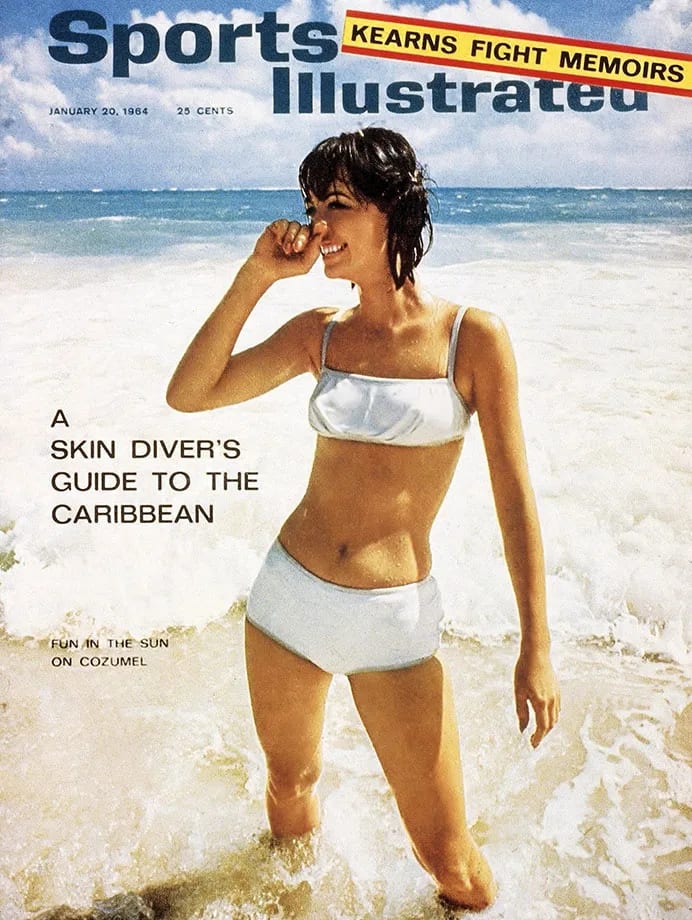
Image Credit:Courtesy of SI Swimsuit
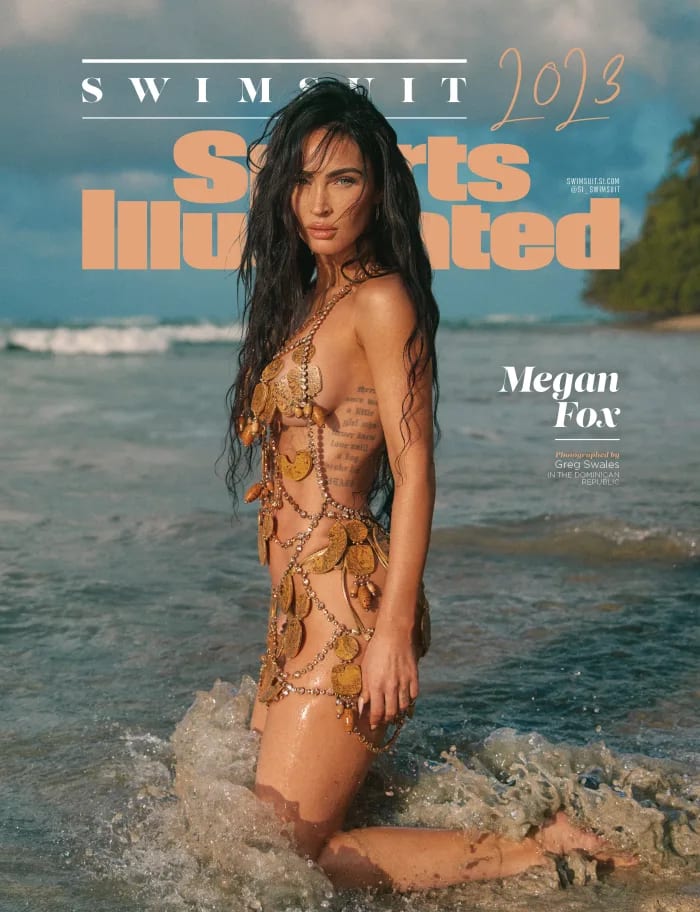
Image Credit:Courtesy of SI Swimsuit
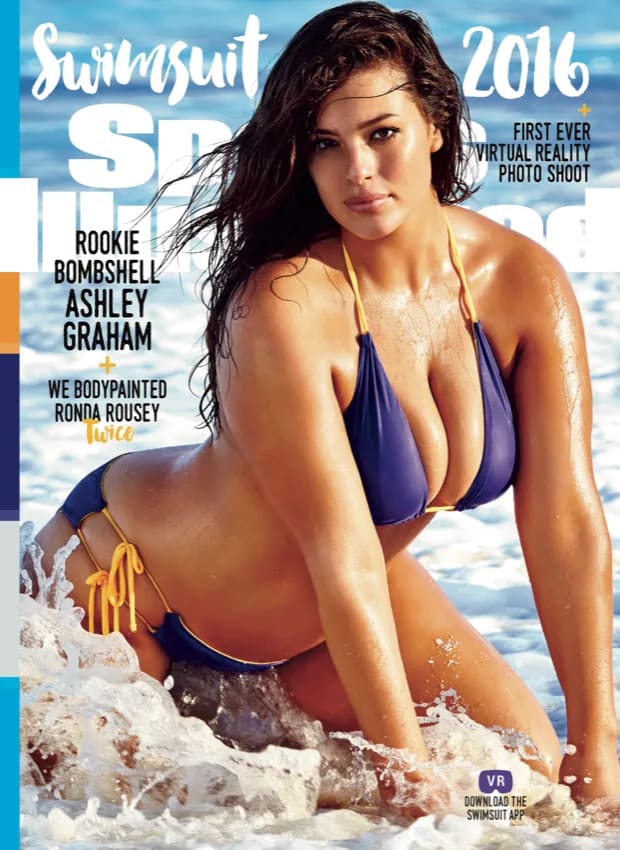
Image Credit:Courtesy of SI Swimsuit
Early Beginnings
20th January 1964 saw the first Sports Illustrated Swimsuit issue being launched- that's right, about 6 decades ago. The then-editor Andre Laguerre designed this edition as a 5-page supplement to pump up winter readership as people waited for the sports season.
Wondering who was the lucky model to appear in this first edition? A German-born Babette March. Her image featured a short bottom and white bandeau top, heralding years of eye-grabbing photos of models in bathing suits.

Image Credit:Courtesy of SI Swimsuit
Jule Campbell (who died last year at 96) became the Issue's first editor in 1965. This mastermind's reign (1965-1996) transformed the SI Swimsuit issue from a mere publication of provocative images into a commercial juggernaut.
The following year saw 18-year-old Sue Peterson gracing the prestigious cover. She was a freshman at Los Angeles Valley College by then.
She was followed, among others, by Marilyn Tindall (1967), Cheryl Tiegs (1970, 1975, and 1983), and Tannia Rubiano (1971). Readers couldn't get enough of these and other models' amazing bodies on beautiful lean legs.
However looking back now, at the covers of these first 10 years, I was impressed to see how certain styles have evolved but were already well-presented over 50 years ago. What about Sue Peterson's cut-out swimsuit from 1967 or Tannia Rubiano's top from 1971? Especially Tannia's photo, showcasing her naturally radiant physique, defied societal norms and embraced body positivity, even more than half a century ago.

Image Credit:Courtesy of SI Swimsuit
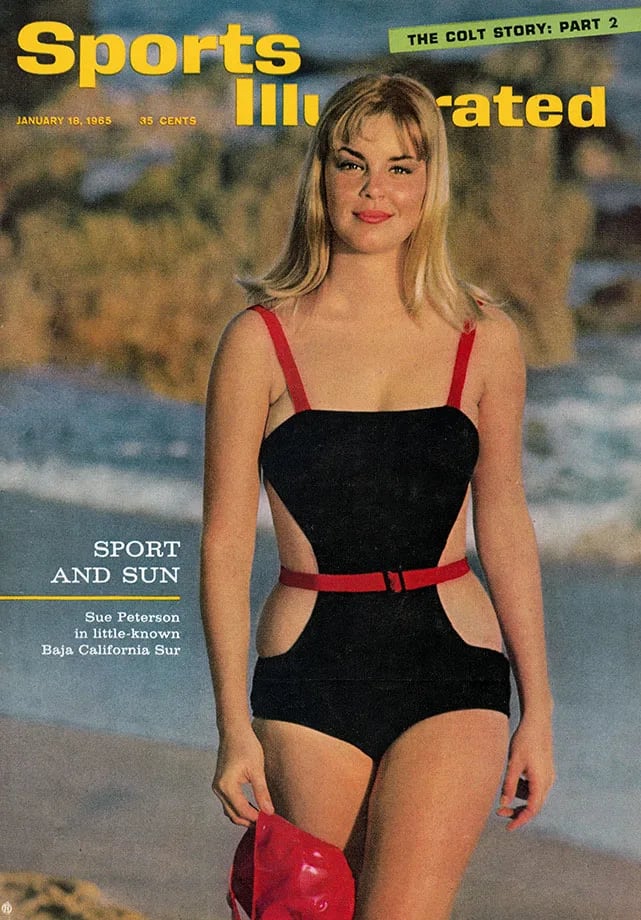
Image Credit:Courtesy of SI Swimsuit

Image Credit:Courtesy of SI Swimsuit

Image Credit:Courtesy of SI Swimsuit
The publication scooped special-issue status in 1997. Since then, Time Inc. has been crowning it the single best-selling edition.
Back in 2005, Sports Illustrated was making serious bank. CNN Money reported that the magazine pulled in a whopping $35 million from advertisement sales alone. But that wasn't the only cash cow for them. The swimsuit issue, with all its glamour and allure, gave birth to a range of secondary products like calendars, DVDs, and television shows. And guess what? Those additional goodies brought in another cool $10 million in revenue.
Cultural Shifts and Expanding Boundaries
Before 1965, it was rare to see models' names alongside their photos on the cover. Jule Campbell changed the story- she started including the names, allowing the models to be house brands.
But the publication faced a severe public backlash in 1978 when its cover showed Cheryl Tiegs wearing a white fishnet top that exposed her nipples. Time-Life offices received furious letters, and more than 340 subscribers bid the publication goodbye.

Image Credit:Courtesy of SI Swimsuit
Since then, the edition strived to ensure a careful balance. It began embracing diversity while keeping aesthetics intact.
However, the times were not yet ready, and in 1979, the first cover featuring Christie Brinkley emerged, marking the era of supermodels.

Image Credit:Courtesy of SI Swimsuit

Image Credit:Courtesy of SI Swimsuit

Image Credit:Courtesy of SI Swimsuit

Image Credit:Courtesy of SI Swimsuit
The hedonistic physicality of the 80s heralded the rise of a generation of models who dominated the fashion world. Names like Elle McPherson, Claudia Shiffer, Paulina Poritzkova, Cindy Crawford, and Naomi Campbell come to mind. Among them, Christie Brinkley, Paulina Poritzkova, and Elle McPherson, each with three covers, stand out prominently during this period. The Sports Illustrated cover became a symbol of success for these accomplished models.
From the 90s onwards, the perception of beauty and individuals began to change, and SI Swimsuit was quick to understand that a highly successful trend was coming to an end. It was necessary to redirect attention toward female beauty models that were more inclusive and less unattainable. Gradually, the era of supermodels came to a close, and the Sports Illustrated cover became accessible not only to fashion elites and models within the industry.
1996 witnessed the first black woman getting the envious spot. Call her Tyra Banks.

Image Credit:Courtesy of SI Swimsuit

Image Credit:Courtesy of SI Swimsuit
The magazine continued to include diverse models, body positivity, and representation. Tennis enthusiasts couldn't hide their joy seeing Serena Williams appearing on the SI Swimsuit cover in 2003. And Beyonce, "the first lady of music," appeared in it in 2007.

Image Credit:Courtesy of SI Swimsuit

Image Credit:Courtesy of SI Swimsuit
Ashely Graham emerged in 2016 while Hunter McGrady first appeared in 2017, giving curvy women a louder voice to be heard worldwide. In 2022, she returned for her 6th year as an expectant mom.

Image Credit:Courtesy of SI Swimsuit

Image Credit:Courtesy of SI Swimsuit
Halima Aden gave the modeling world a Muslim touch in 2019. Her burkini and hijab injected some freshness into the publication.

Image Credit:Courtesy of SI Swimsuit
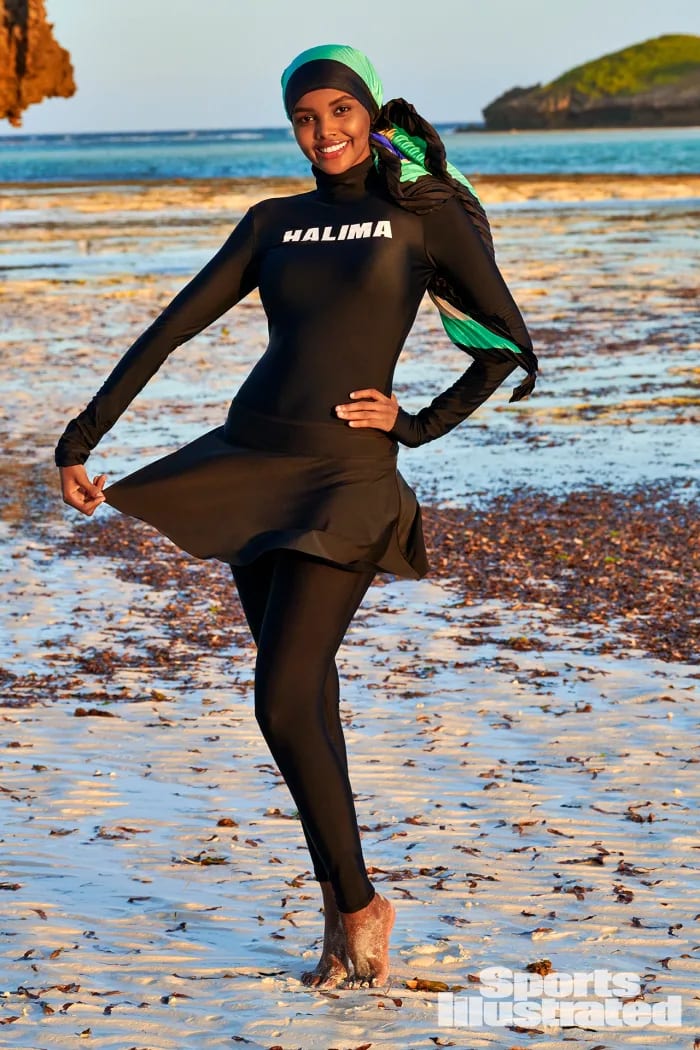
Image Credit:Courtesy of SI Swimsuit
SI editors also aim to spice up the publication with an intellectual touch. Their 2001's theme, "Goddess of the Mediterranean", took readers through a captivating swimsuit odyssey that reminisced Homer's epic tales. Imagine a true blend of historical and mythological settings!

Image Credit:Courtesy of SI Swimsuit
Franz Lidz's article dived into Roman gladiators, further enriching the year's theme. The model Shakara Ledard played Diana, Goddess of the Hunt, and Veronica Varekova played Aphrodite.
But going overboard to the intellectual world? No, the magazine had to maintain a sense of mild danger. With this in mind, the editors have always felt compelled to portray the publication as a subject of widespread controversy- no wonder a fortnight after every annual release, the editors publish letters from offended parents and librarians. W. Frank Caston from Columbia, SC, was the first person to express his disapproval on February 1964. He feared that such images were too provocative to his teenage son.
About 20 years later, the Issue displayed letters from furious subscribers who viewed it as "smut" and mailed the offending pages back. It seems SI borrowed a leaf from Hugh Hefner- nurturing the opposition to boost its image.
From 2013 onwards, the magazine spread its tentacles to delight all seven continents. At least people from all races start seeing their representation.
Beyond the Beach: Embracing Empowerment and Sports
Sex and sports have increasingly intertwined to form an inseparable couple over the years. This coupling has helped catapult the SI Swimsuit's popularity.
A subscriber in 1966 might have wondered how football and swimwear were related. But today's reader knows sexuality and sports are inseparable- from cheerleading to beer ads to moments when Nicollette Sheridan leaves her towel behind and runs into Terrel Oween's arms.
The magazine believes this increasing intimate connection is why canceled subscriptions have plummeted. And it's proud to contribute to cementing this bond, bridging the gap between supermodels and fans.
Alex Morgan and Lindsey Vonn are among the athletes who have graced this Issue's content.

Image Credit:Courtesy of SI Swimsuit
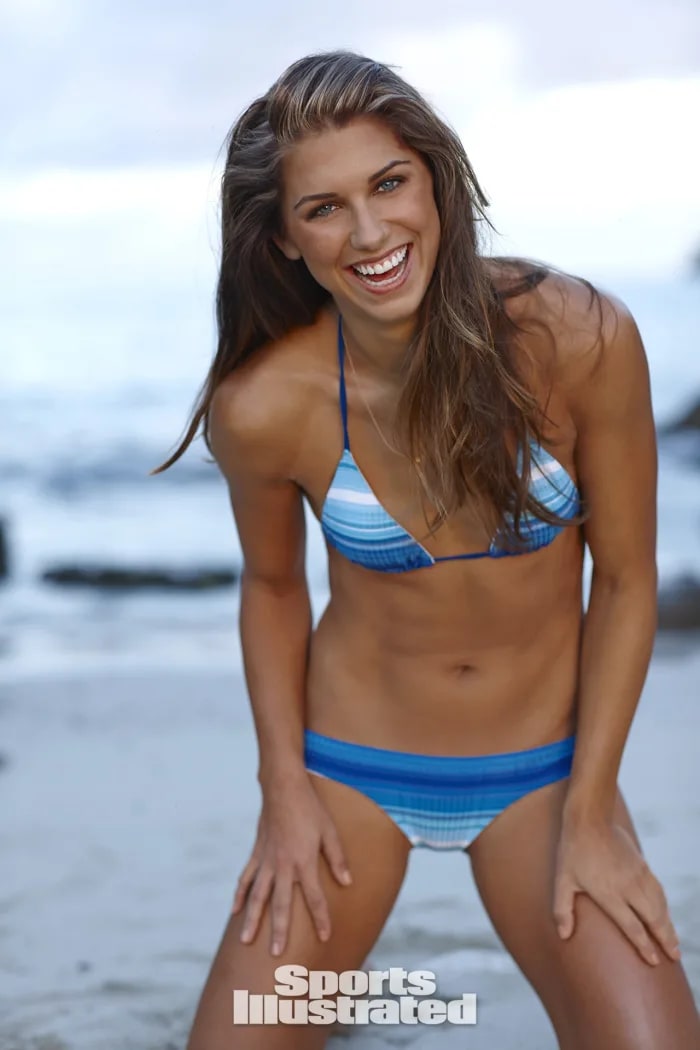
Image Credit:Courtesy SI Swimsuit
The publication has shrewdly positioned itself between sports and other adult-oriented content for more than five decades. This position has catapulted its revenue.
So, How Did Swimwear's "Sexiness" Evolve Over the Years?
SI Swimsuit Issue lends us its eyes (covers and pages) to decipher swimwear trends over the past six decades.
The pioneering models' poses were more candid than recent versions, more or less like casual shots. Plus, the first model wore a relatively boyish white bikini- She didn't fill out the bikini's top.
But in 1978, Cheryl Tiegs's appearance in a see-through fishnet single-piece triggered uproar countrywide. And the 1999 cover showed Heidi Klum wearing a painted swimsuit- that's right, she was actually naked.

Image Credit:Courtesy of SI Swimsuit
And in 2008, Walmart contended with customer complaints for openly showcasing Marisa Miller's topless cover image. Fast forward to 2013- a parka barely covered Kate Upton's alluring features.
What has struck me the most, as I looked through the covers of SI Swimsuit over its approximately 60 years of history, is the unwavering commitment of the magazine's editors to showcase the evolution of swimwear styles. Yes, the model or celebrity in the photograph undoubtedly steals the spotlight, but the attention to detail when it comes to the swimsuit styles associated with each individual is truly remarkable.
From the high-cut swimsuits of some editions to the intricately embroidered bikinis and the plunging necklines of certain one-pieces, each swimsuit tells a story of its own and reflects the changing times.
It remains a constant reminder that even a small piece of fabric has the power to interpret a new narrative each time, allowing women to embrace and express their femininity and personality, regardless of their body type.
It's fascinating how this visual representation of swimwear has become a medium for empowering women, capturing the essence of different eras, and celebrating individuality.
The Legacy Continues: Looking Towards the Future
SI Swimsuit revealed its 2023 cover stars on 24th May. Martha Stewart stood from the pack for being the oldest woman ever to appear on the cover. She flaunted her stunning figure to make every woman proud of themselves.
Stewart's images showcased her in 10 different unique swimsuits. In one image, she appears dressed in a red single-piece with a plunging neckline. Another photo shows her wearing a bright smile and a white bathing suit.
This established businesswoman terms the rare moment "historic"- after all, beauty magazines are known to be full of much younger ladies. Other star girls on the 2023 cover are Megan Fox, Brooks Nedar, and Kim Petras.

Image Credit:Courtesy of SI Swimsuit

Image Credit:Courtesy of SI Swimsuit
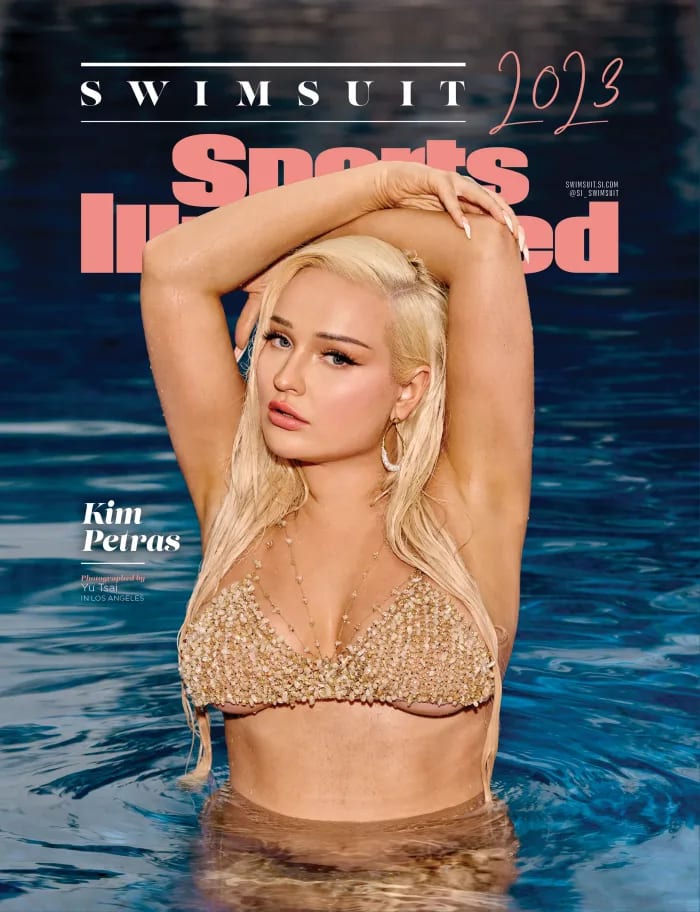
Image Credit:Courtesy of SI Swimsuit

Image Credit:Courtesy of SI Swimsuit
The magazine looks to expand its inclusivity. Pop singer Kim Petras graced the cover of the Sports Illustrated Swimsuit Issue being the second transgender woman after Leyna Bloom in 2021.
But not all consumers fancy inclusivity marketing.
Including LGBTQ+ community has born a massive share of backlash from people worldwide. In fact, the latest campaign featuring members from this community sparked calls for boycotts. But the edition seems too adamant to cave into the pressure.
In 2018, MJ Day, the editor-in-chief of the Sports Illustrated Swimsuit franchise, expressed how they're advancing inclusion even though the world isn't entirely on board. According to Day, the SI Swimsuit issue strives to express beauty in all its forms: Skin color, height, gender, size, etc.
"In recent years we’ve worked hard to make the Swimsuit Issue a celebration of another idea long obvious to those of us in the real world, even if Hollywood, the fashion industry and mainstream and social media are sometimes slow to embrace it: the inarguable truth that beauty comes in all forms. Dark, light, curvy, slim, tall, short — all types of beauty are worthy of celebration. " - MJ Day 2018
Revolution and Change are Our Society's Survival Fabrics
The SI Swimsuit publication has delighted Americans and offended some for about six decades. It has also helped bolster various people's careers, including models, celebrities, sports people, writers, editors, and business people.
This issue has evolved to remain relevant in today's world. It celebrates women from different backgrounds defined by age, race, skin color, religion, gender, and other factors. Moms and pregnant women too have had representations on its prestigious cover.
The SI Swimsuit covers became a testament to the enduring power of self-expression, celebrating the diverse narratives and stories of women. It became an empowering medium, offering a platform where women could boldly embrace their own unique versions of beauty and inspire others to do the same. The transformative power of these images went beyond the glossy pages, permeating our collective consciousness and redefining the standards of femininity.